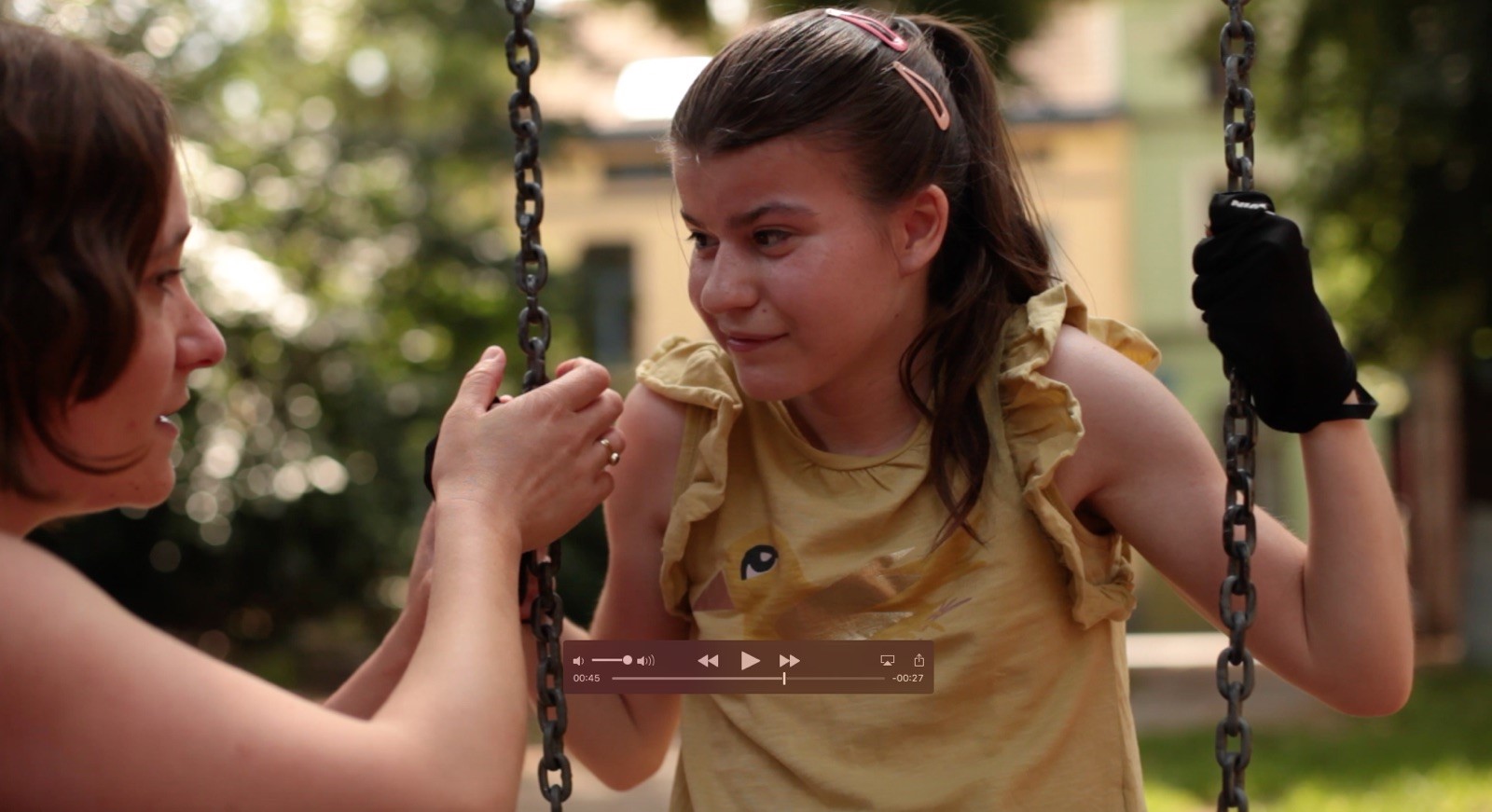In the context of the project NeuroEpigenEthics, Leni Van Goidsenhoven brings in life experiences by using arts-based research methods. Together with the artist Karel Verhoeven, she is currently making a video work about swinging. With this video, they want to take up and respond to Patty Douglas’s call for “re-thinking communication, queer (relations to) movement and objects, and radicalizing relationality” (2019: 8).
Heleen is a young woman of 18 who is labelled autistic and has severe communicative challenges. Her way of relating would normally be termed as “non-verbal” and as “oblique, strange, and out of place” (Ahmed 2006). Heleen also has an enduring love for swinging, a love and practice which is mostly interpreted trough her label of autism as an “obsessive and compulsive ritual”. Because she is very small and looks much younger than most people of her age, her love for swinging is often seen as a rather “childish practice”.
Inspired by the work of Donna Haraway and Sara Ahmed, and together with Heleen and Karel, Leni wants to offer a different approach to “non-verbal” and “obsession”, by looking for moments that stand out. In these moments, that could be called “queer” or “crip”, difference is not defined as a lack or deviation, but as something that emerges and opens up multiple ways of being and ways in which human and non-human bodies can interrelate (Ahmed 2017).
During the hot summer of 2019, Leni, Heleen and Karel went swinging several times. Karel filmed how they travelled together by bike, how they prepared themselves to get on the swing and what happened during the following hour on that swing. Focusing on the swinging act, the camera captures the hypnotic movements and sounds, and pictures Heleen in a cinematic-aesthetic way. At the same time, the camera not just focuses at Heleen, but also looks with and through the eyes of Heleen. While selecting and editing the video, the three of them explored the material. Karel also filmed how they work with this raw video material: how they watch, watch again, and repeat and manipulate specific sequences endlessly. Together they cut, create and enclose new scripts about communication and relationality. Leni and Karel are staying as close as possible to Heleen and her way of “becoming-in-the-world” (Shildrick 2009). In and through this act of aesthetic documentation, Leni, Karel and Heleen study who or what comes to matter in an encounter.

